

sbcltr spoke to photographer Mark Bennington about his one-of-a-kind photo book, Living the Dream
Who are the people who make Bollywood? What happens before the camera starts rolling? These are some of the questions that Mark Bennington aims to answer in his photo book, Living the Dream, which has interviews of over 110 people. From Kareena Kapoor, to struggling artists looking for their big break, to the laughs between shots and reading lines in the local, Bennington manages to capture the raw vulnerability and hard-work of the community that looks so flawlessly larger than life on screen.
sbcltr spoke to Bennington about what brought him to Mumbai, his creative process and future projects.
Can you tell us a bit about yourself?
I’m a photographer, originally from northern California, now living in New York City. I picked up the camera in 2003, after working as an actor for 10 years in New York & Los Angeles. I was looking for something new and creative, after feeling a little bored with my acting career even though I was doing a lot of theatre and TV. So I started photographing all of my friends in Hollywood—doing their head-shots, portfolios, etc. And almost over night, I was making a living as a photographer and loving the newness and creativity of it. Within those first 6 months, I realised that if I was charging people for my services, I should probably know what I was really doing- so, I went back to school for photography and later photojournalism. When I discovered documentary work, that’s when things started to shift. I saw the work of Alexandra Boulat, David Alan Harvey, Alex Webb, Mary Alan Mark, Eugene Richards, Lauren Greenfield, etc… that’s actually when I went back to school again for photojournalism. For a long time, I tried to separate the two, but a few years ago as I found myself teaching photography at the S.I. Newhouse School at Syracuse University and realised that I could successfully do both commercial work and project based work AND that they would/could inform each other. On a side note- I’m also a drummer and played in a very popular LA ‘roots rock’ band for about 5 years, recording 3 albums with them.
How did you end up in India and Bollywood of all places? What attracted you to it?
It all started by reading Robert Johnson’s book, Balancing Heaven and Earth, that made me feel like I had to come to India… to see, feel and experience it- not as a tourist, but as a human being. I love the way this culture feels life and FLOWS- it is refreshing. I also love the way everyone is referred to as brother, sister, aunty, uncle… it feels like everyone is together. I love the traffic and the smells and the food!! I feel at home here. I married a girl from Pune. I have family here now. And then, of course, as an artist it is very complex socially—this is also fascinating and very much informs my work.
What was the process of doing this project? How long did it take and was it tough getting access?
I came the India and the doors just opened. Hahaha, well it was almost that simple. The project was not really born out of a long standing fascination with Bollywood but rather an interest in capturing the lives of actors and it just so happened that I was met with when I came here pure serendipity when I came here… I found myself in Bandra and met someone who put me in touch someone who put me in touch with Guneet Monga. Guneet was then a kind stranger who introduced me to about 20 actors in the first week. I returned to the States with the dream of turning this grass-roots project into a very unique book and with the help of Shanoo Sharma after a few more months of shooting that is exactly what has happened. The bulk of whole project took only about 6 or 7 months to shoot.
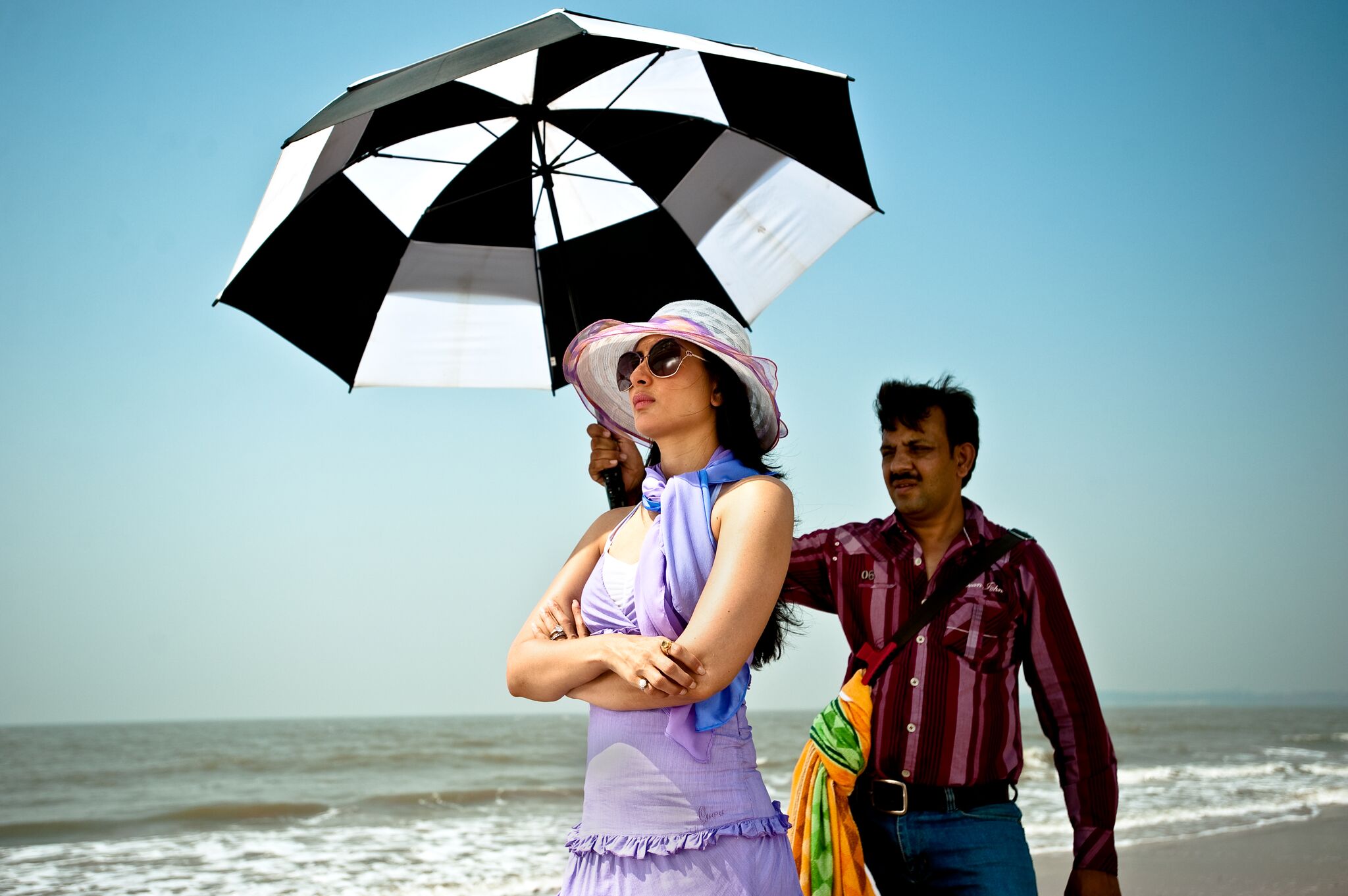
A man holds an umbrella for Kareena Kapoor as she shoots a commercial for sunscreen on Madh Island. “Yeah everyone gossips but I’m not really affected by it,” she said. “I think it’s much different here than it is in Hollywood….See, I come from a film family and a tradition…so it’s more intimate and never vindictive. Mostly everyone is pretty good natured.”
What is most becoming about your photo book is the fact that, not only does it have portraits of Bollywood stars in their candid times, but even in those moments, these pictures kind of sum up their personality, was that deliberate?
Very much so. Capturing someone’s personality, what makes them unique in the community is the whole point of being a portrait photographer.
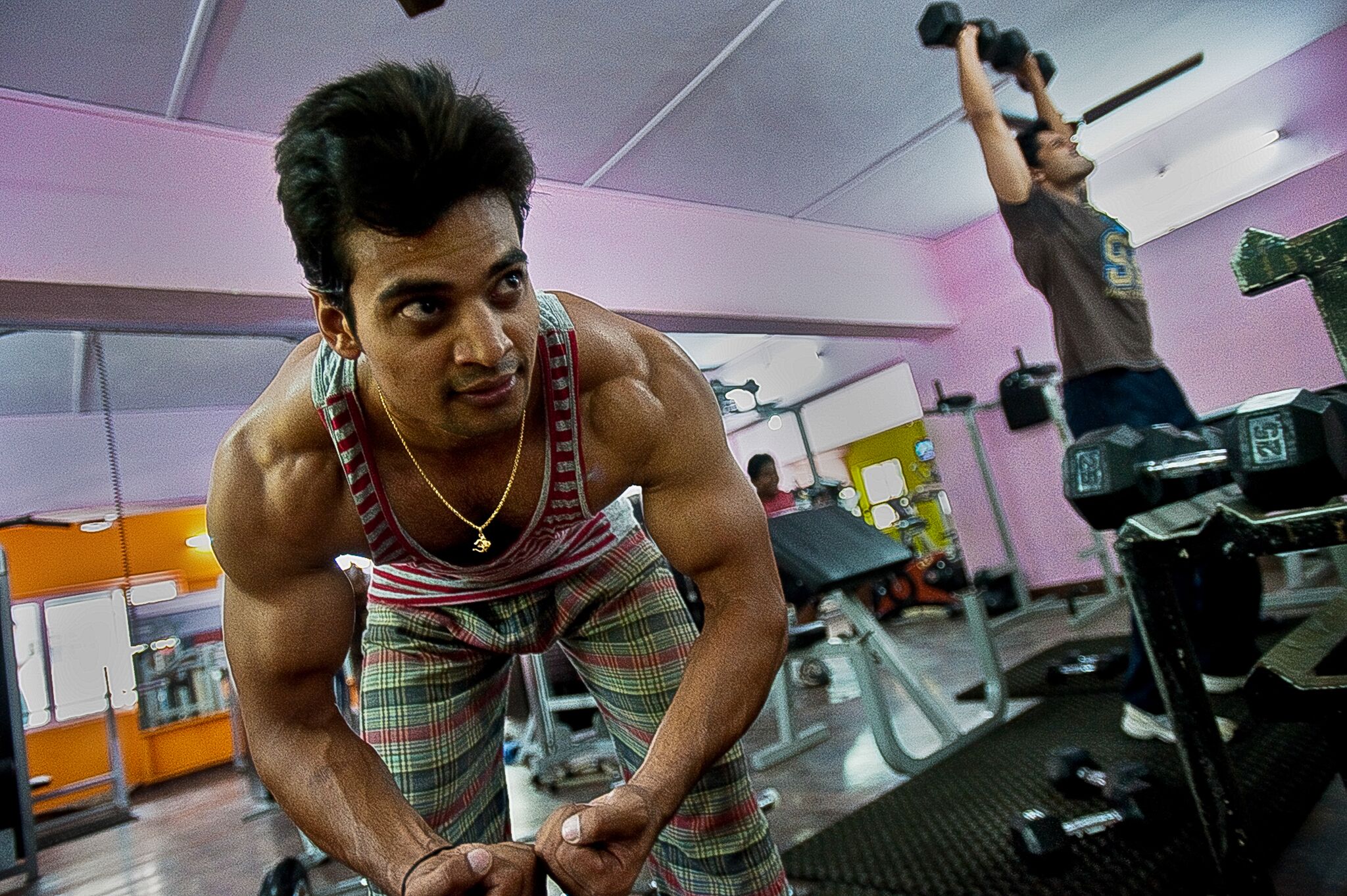
Struggling actor Nitin Gupta working out at Diljit’s Gymko in Seven Bungalows section of Mumbai. “I want to work but never did the casting couch, even though I faced it in the early days. When I went for auditions, some male coordinators called me to their places and said, “Okay, you sleep with me and I’ll give you work.” Just like that. I came here in 2009 and never went to acting class. I just did the Bollywood dance classes and joined the gym. It’s very competitive here, but at the gym I feel like I’m the best.”
Another thing that is most striking is the juxtaposition of grit and vulnerability in the frames of the strugglers caught behind the scene, in essence, that struggle is what makes this movie industry what it is. It is not only a place where people go to dream, but a lot of dreams go to die too, was that something when you were clicking those pictures? That fragile moment between dreams and reality?
Certainly that philosophical debate came up in the process, but I would never photograph someone with any judgment, because all these people – every single one of them is ‘dreaming’, whether those dreams have been realised or not. Dreaming is a process and ALL are valid and valuable.
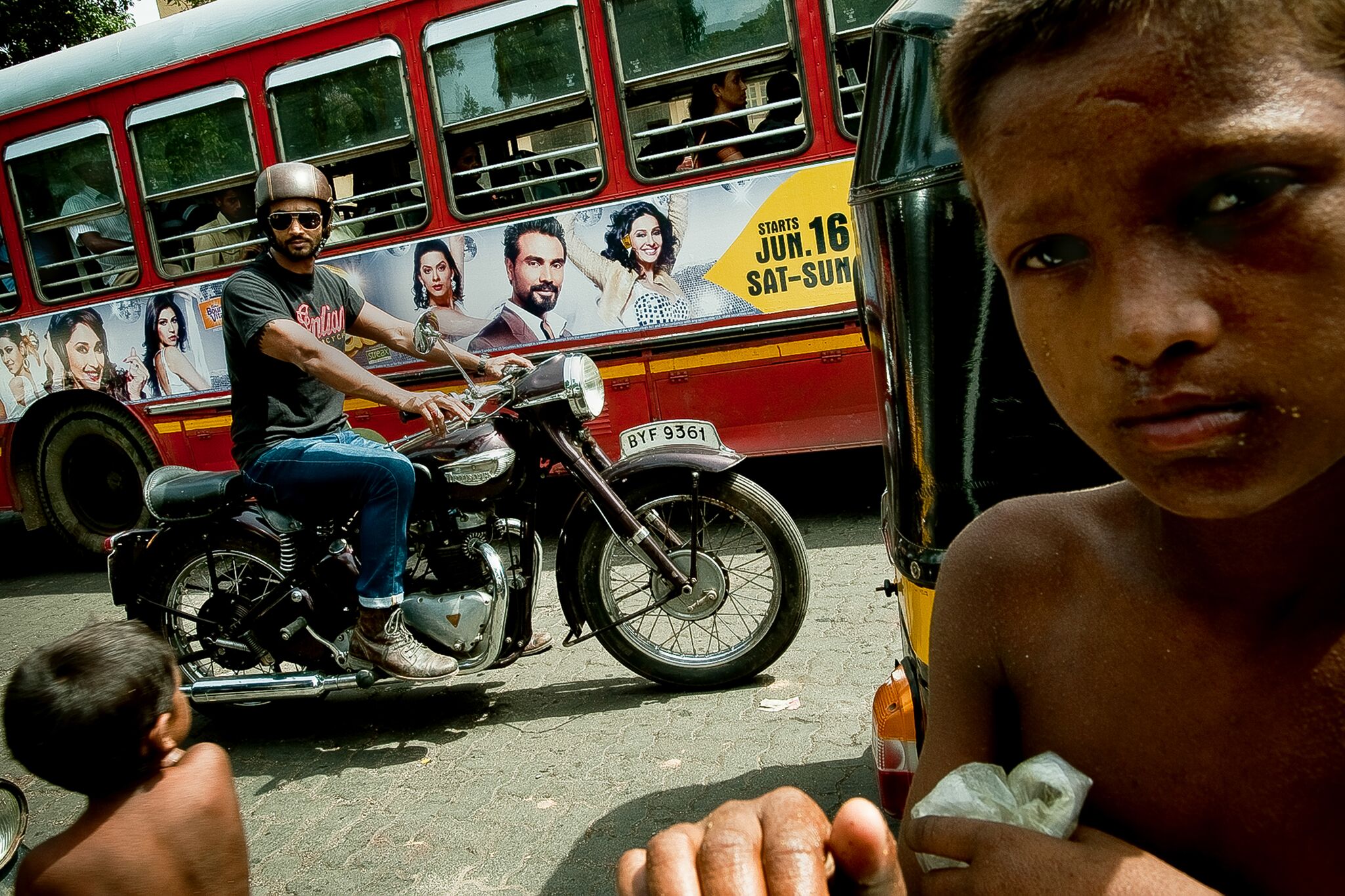
Shayan Munshi sits at a traffic light in Mumbai. “Life comes with a mixed bag of luck… I’ve had my ups and downs, but isn’t that all a part of life? I could’ve perhaps rethought my move to the UK after Jhankaar Beats, but that wasn’t to be. My choices have had their own positives and have been instrumental in shaping me and my understanding life and seeking inspiration… I’m moving forward and don’t ever want to look back.”
What do you seek when you ask people to tell their story?
This is a documentary project, so the point was to document the community… to capture each section of the community so that the public could see it, hear it and feel it in it’s entirety. The theme of book actually came from my experience as an actor. For instance, when I would go visit relatives for the holidays and get asked “So, you must be going to glitzy Hollywood parties all the time and hanging out with stars?” and I would say, ‘Not at all. I’m either learning lines, auditioning, rehearsing a scene, performing a play at night, shooting during the day, working part-time, going to the gym, reading a play, reading a script or reading a book on acting or how to better myself.” So, it came from this idea that no one outside the business has any idea what an actor’s life is really like. And in the case of this book, what it looks like. I wanted to humanise the actor’s life and shed some light on this reality, which I believe gives a richness and complexity to the images.
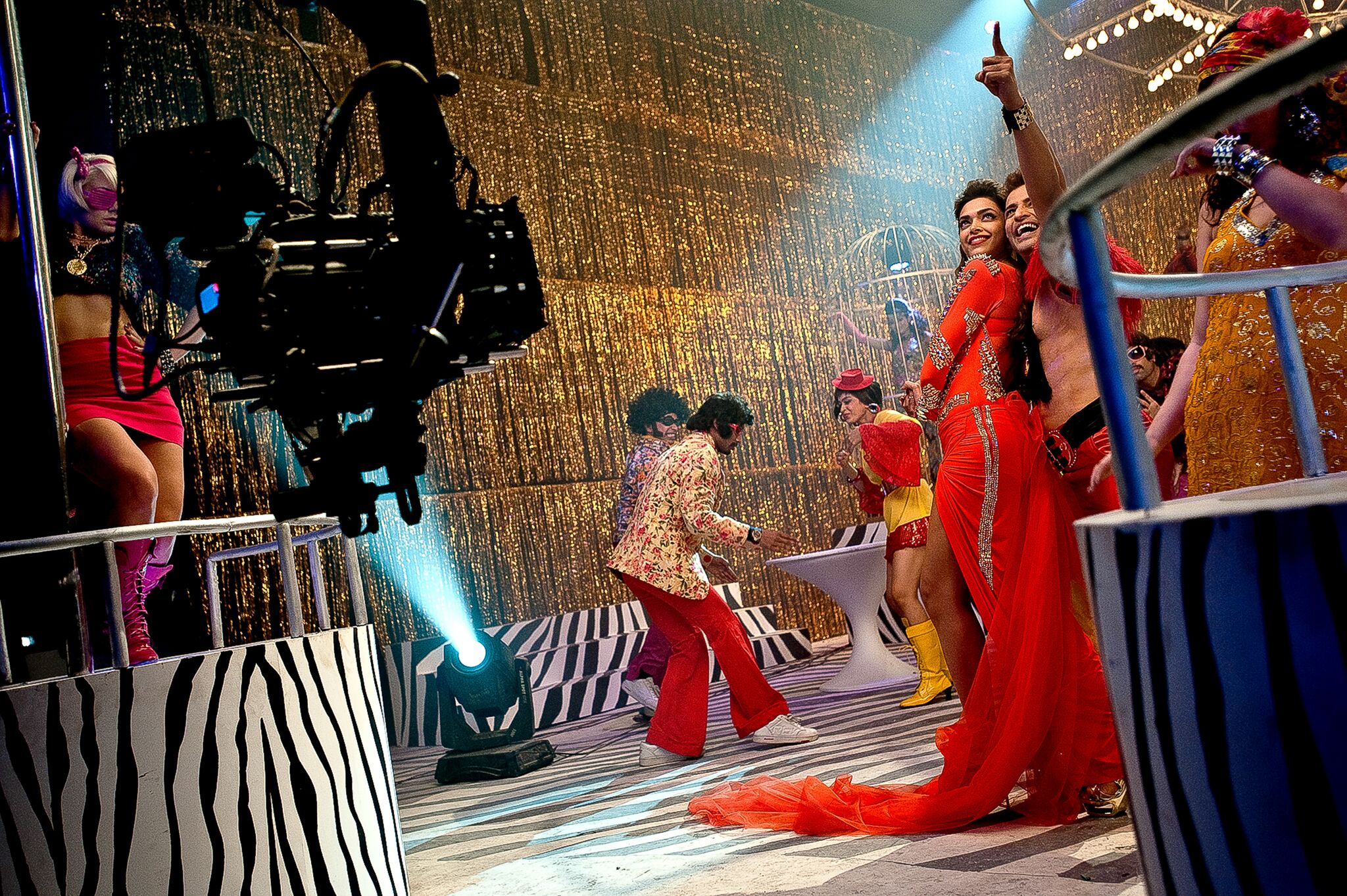
Deepika Padukone rehearses for a music video at Film City. “To the outside world it looks like I’m super-confident, but nobody knows what I’m thinking,” she says. “Only people that are close to me know that I have butterflies in my stomach all the time.”
And what is the singular most important story that you wish to tell through this book?
Honestly, every story was the single was important. I dedicated the book to “All those who dream for real.” This really is the story of many that only few know.
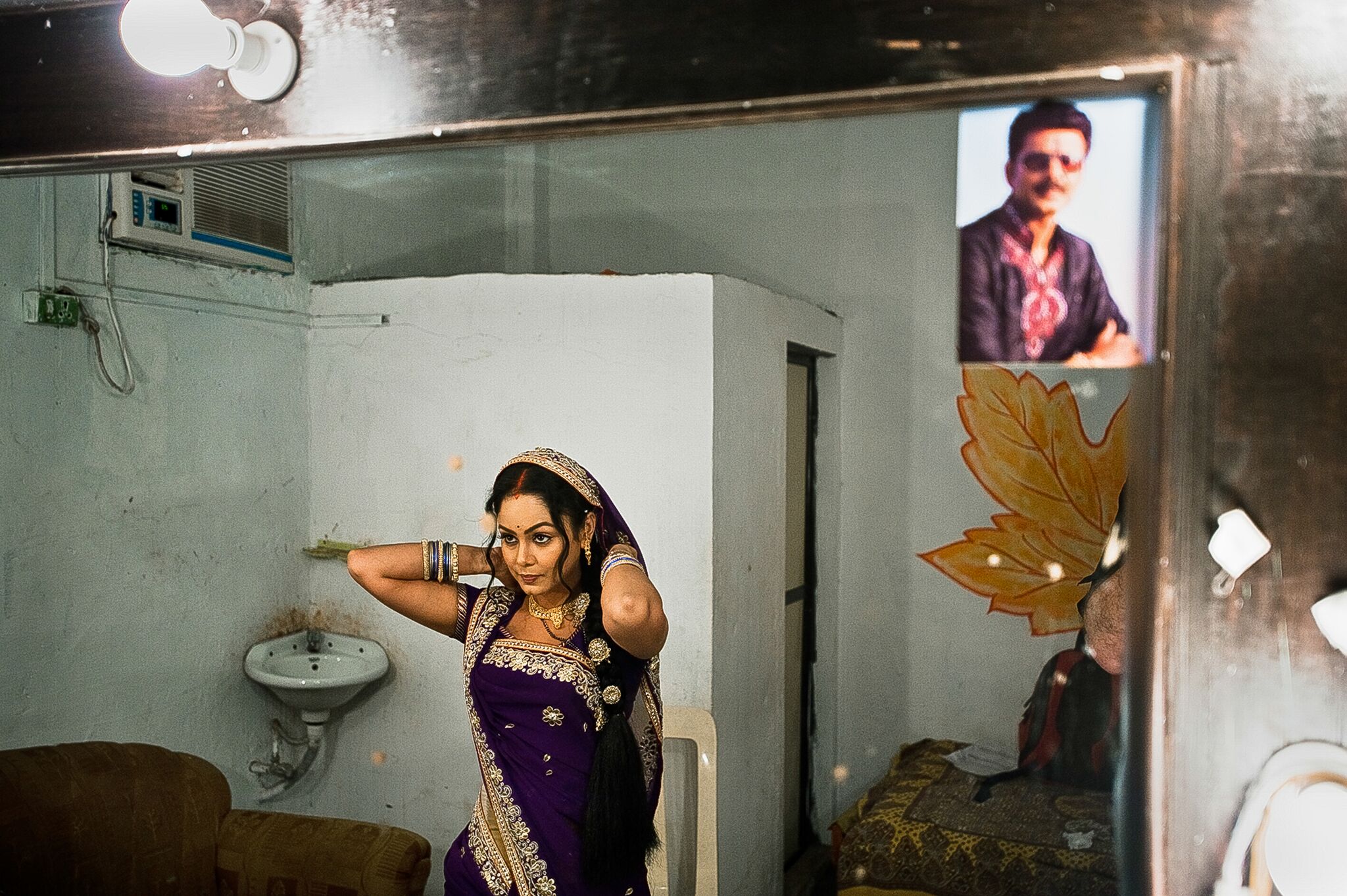
Relatively new TV actress Pooja Verma in a typical dressing room she shares with three other actresses on the sets of the soap opera “Bhagyavidhaata” in Film City, Mumbai.
Any special moments and anecdotes that you’d like to share?
My favourite anecdote from the book is Amol Palekar, who talks about how unbelievably close the camera can get when you are acting on film—it is, in fact, so close, that one of the very first fan letters he received was from a dentist, saying that he thought Mr. Palekar that a few cavities that need to be attended to!!!
I love so many images in the book, but really respond to the spontaneous laughter images, Shilpa Shetty, Alia Bhutt, Zayed Khan, Nandita Das, Deepak Dobriyal, Saurabh Shukla—I have seen these images numerous times and I still crack up!! That’s the best part of this kind of photography (documentary)—you can feel it.
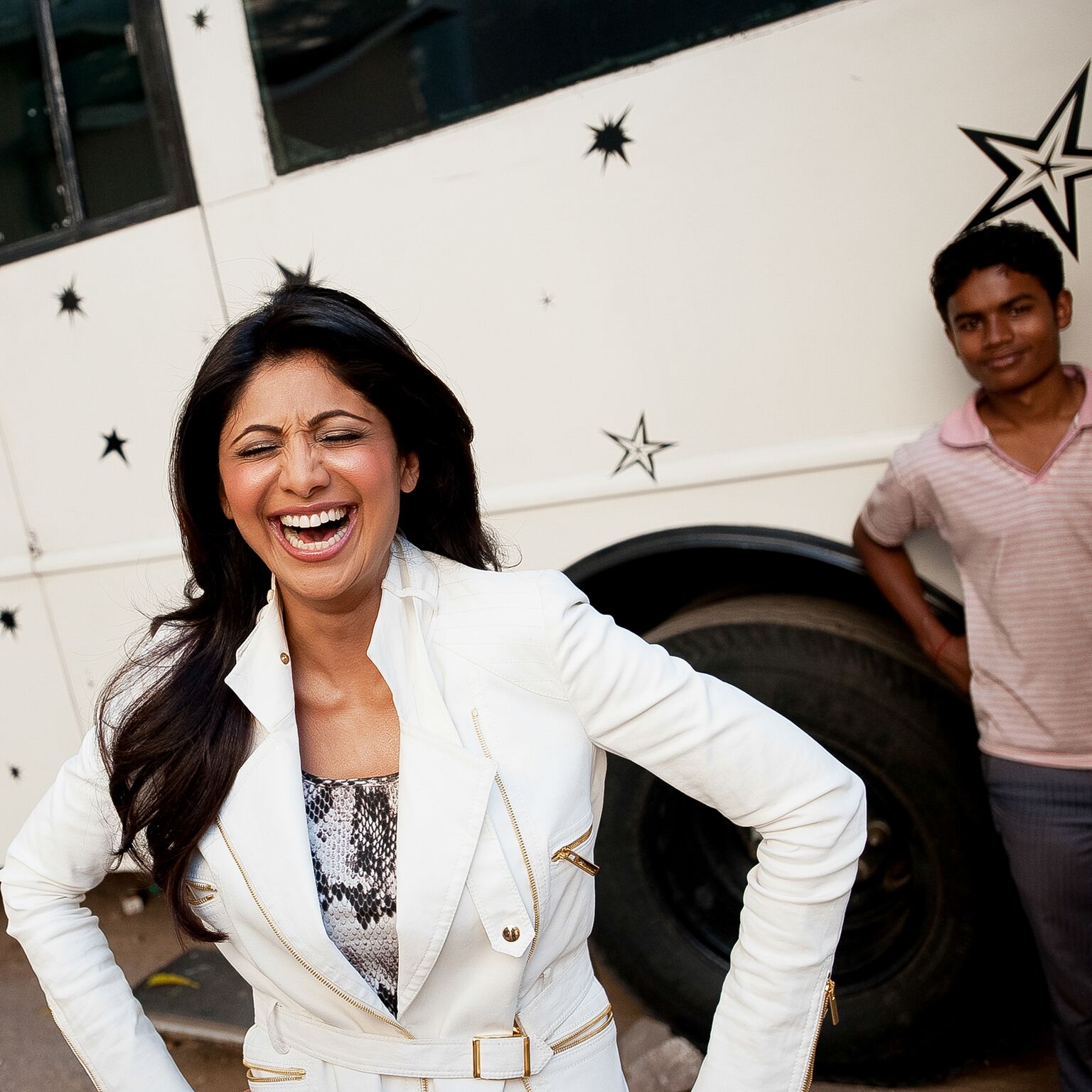
Shilpa Shetty outside her vanity van after a commercial ad shoot at Mehboob Studio in the Bandra section of Mumbai. She shot to fame in the early 1990s and stayed on top for more than a decade. “In Bollywood (as a heroine) you lead a fairytale life on screen for your fans. It’s so colorful and you have the songs and the dances. You are their fantasy. So when a heroine gets married in real life, the audience, who have been fantasizing about her, suddenly no longer can. It’s over. That’s how it works. That’s Indian mentality!”
What was your biggest take-away from this project?
I am in a very unique position of being an outsider & insider at the same time, so I would say from that vantage point – having the satisfaction of sharing something that has never been done before. Being able to capture and contribute something that had never been captured before. And not only the acting community of Mumbai, but to all acting communities around the world as this is a very universal slice-of-life book about the soul of the Actor.

New York City native, Nargis Fakhri is a highly recognized model, who made her acting debut opposite Ranbir Kapoor in the film “Rockstar”. Seen here, in her bathroom, getting ready for a promotional event at Shoppers Stop in the Juhu Beach section of Mumbai.
What are your next projects and when will we see you in India again?
I’m actually in Mumbai now working with DEU Creatives for advertising/corporate work and finishing up my next book project with HarperCollins called MI MUMBAI. It is a series of black & white, 8×10 portraits clicked against a white backdrop. I wanted to do something that was stylistically quite different from Living the Dream and would incorporate my circle of friends here in Mumbai. So, the images are a combination my circle and the Mumbai that surrounds me, the strangers I meet everyday. The entire project has been predominately shot on the streets with only natural light. It is my continued attempt to bypass class and caste systems, while simultaneously creating a vision of equality. The project and others can be seen on my website www.markbennington.com Plus, I’m also starting to teach photography workshops here in Mumbai.
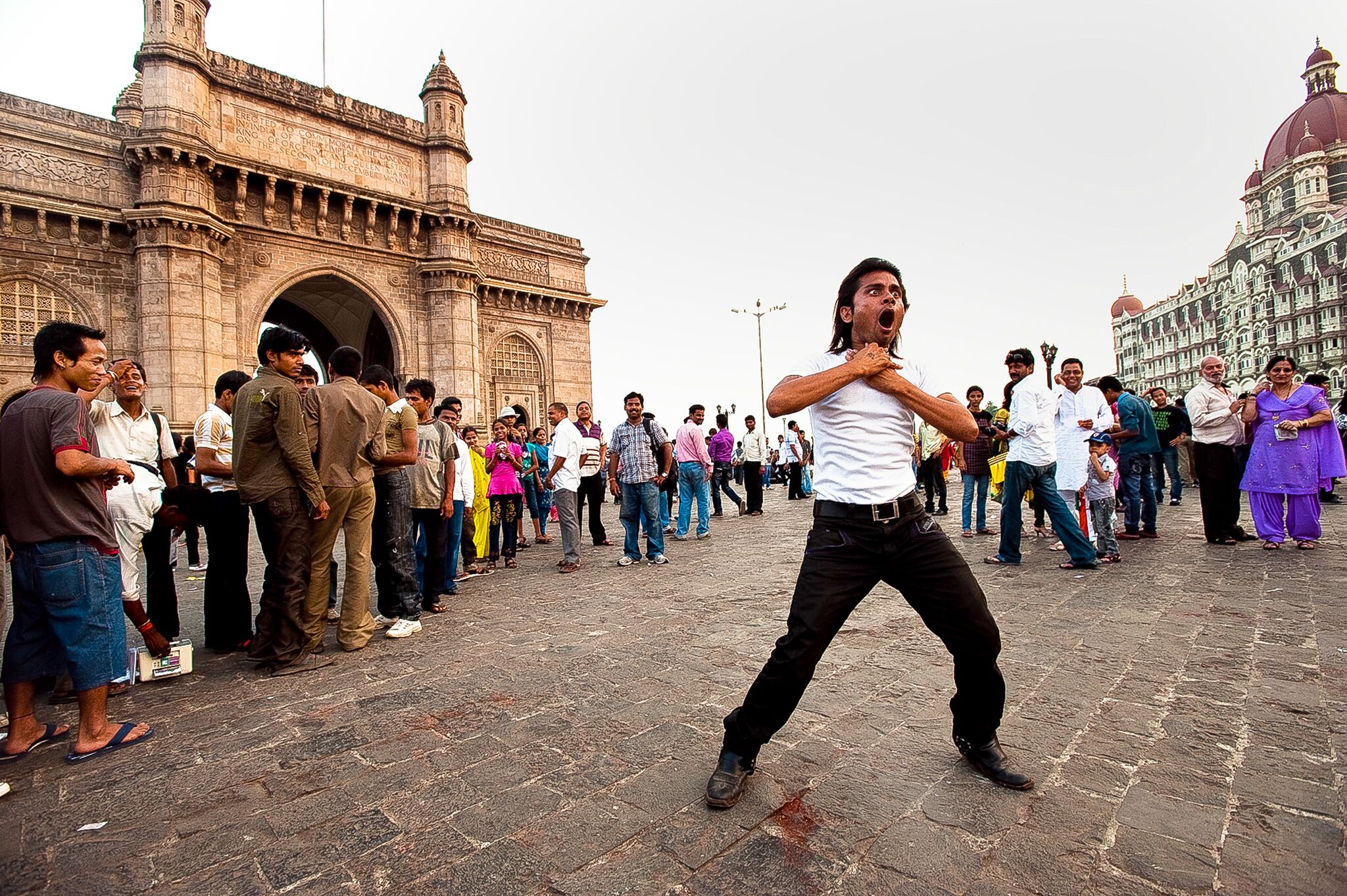
Struggling actor (and notorious street performer) Gabbar Singh enacts a scene from the classic film “Sholay” at the Gateway of India.
To see more of Bennington's work, click here